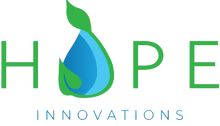Master Hydroponic Growing: Nutrients, pH, and EC Without the Science Jargon!
Struggling with Hydroponic Nutrients? Here’s How to Make It Simple and Grow Thriving Plants
Ever feel like you need to be a scientist just to understand hydroponic nutrients? We’ve been there too. When we first started, all the technical terms and complex details were overwhelming. The internet can make it seem like you need to be an expert botanist or a seasoned gardener just to get started. But it shouldn’t be that way—starting hydroponics can actually be simple, and you don’t need to know everything right off the bat. We’ve simplified the essentials so you can focus on what really matters: growing healthy, thriving plants.
The Essential Nutrients for Plant Growth
Plants require 16 different elements to thrive, which are divided into two categories: macronutrients and micronutrients. Both are equally important, but they differ in the quantities needed by the plants.
Macronutrients are needed in large quantities. There are seven key macronutrients, with the most common being nitrogen (N), phosphorus (P), and potassium (K)—often referred to as NPK. You'll frequently see NPK ratios on nutrient packaging, which indicate the balance of these three vital elements.
Micronutrients, on the other hand, are required in much smaller quantities but are just as crucial for healthy plant growth. There are nine micronutrients, including zinc, copper, and boron. Even though these nutrients are needed in tiny amounts, their absence can have significant negative effects on your plants.
In traditional soil gardening, these nutrients are usually present in the soil. However, in hydroponics, where plants grow in a nutrient solution rather than soil, you'll need to add all of these elements manually to ensure your plants get what they need.
Types of Hydroponic Nutrients: Synthetic, All-Natural, and Organic
When it comes to hydroponic nutrients, there are three main types: synthetic, all-natural, and organic. Each has its advantages and disadvantages, depending on your growing goals and preferences.
- Synthetic Nutrients: These are chemically manufactured, typically in a laboratory. Synthetic nutrients are derived from natural components but have been altered to create a highly pure form of the necessary elements. The precision of synthetic nutrients allows for exact measurements, but some growers may feel uneasy about using man-made products.
- All-Natural Nutrients: These nutrients are derived from salts and minerals, but because they are not living or breathing, they cannot be classified as organic. All-natural nutrients are our favorite choice because they are clean, in a pure form, and readily absorbed by plants without any chemical alterations.
- Organic Nutrients: Organic nutrients come from sources like fish emulsion, seaweed extract, worm castings, bone meal, and blood meal. These nutrients are broken down by microbes in the system into a form that plants can absorb. While organic nutrients are completely natural and popular among those striving for an organic label, they often contain high levels of sediment, which can clog systems and cause inconsistencies in nutrient availability.
If you're new to hydroponics, we recommend starting with all-natural nutrients. They are easier to manage, provide consistent results, and make growing almost effortless. Organic nutrients, while beneficial, may introduce challenges like fluctuating pH levels and potential system clogs, so they are better suited for more experienced growers.
One-Part, Two-Part, and Three-Part Nutrient Solutions

Hydroponic nutrients come in different formulations, commonly referred to as one-part, two-part, and three-part solutions. Here's a breakdown of each:
- One-Part Nutrient Solutions: These are premixed solutions that contain all the necessary macro and micronutrients in one bottle. They are simple to use and ideal for beginners. However, as plants grow and their nutrient needs change, using a one-part solution can lead to imbalances, requiring more frequent system cleanings.
- Two-Part Nutrient Solutions: These are usually labeled as "Part A" and "Part B." Two-part solutions offer more flexibility, allowing you to adjust the nutrient balance depending on the plant's growth stage. This reduces the risk of nutrient buildup and the need for frequent cleanings, but it does involve one additional step compared to one-part solutions.
- Three-Part Nutrient Solutions: These consist of three separate components—typically labeled as "Grow," "Micro," and "Bloom." This approach provides the most control, allowing you to tailor the nutrient mix precisely to the plant's needs at different stages of growth. While it may seem more complex, the benefits include faster, healthier plant growth and less frequent system maintenance.
For those who want to maximize control and efficiency in their hydroponic garden, we recommend using a three-part solution. It may require a bit more effort to manage, but the results are well worth it.
The Importance of pH in Hydroponics

pH is a crucial factor in hydroponics, but it doesn't have to be complicated. The key is to maintain the pH of your nutrient solution between 5.5 and 6.5. This range ensures that all the nutrients in your solution are readily available to your plants.
Think of it like a grocery store: when the pH is within the ideal range, it's like walking into a store with fully stocked shelves, where you can easily access everything you need. But if the pH is too high or too low, it's like the shelves are behind plexiglass—you can see the produce, but you can't reach it. Similarly, if the pH is outside the ideal range, the nutrients are present, but your plants can't absorb them.
Understanding Electrical Conductivity (EC) in Hydroponics
Electrical conductivity (EC) is often discussed in hydroponics, but in our experience, it can be more of a distraction than a helpful tool, especially for small-scale growers.
EC measures how well the nutrient solution conducts electricity, which correlates to the concentration of dissolved salts in the water. However, a high EC reading doesn't tell you which nutrients are present or whether they're in the right balance—it only indicates that there's "stuff" in the water. Similarly, a low EC reading means the solution is diluted but doesn't specify if there's a deficiency in any particular nutrient.
For most small-scale hydroponic setups, focusing on maintaining proper pH and using high-quality hydroponic nutrients is more effective than worrying about EC levels.
Final Thoughts
When it comes to hydroponic nutrients, it’s all about keeping things simple. Just focus on getting your pH right and using quality nutrients that are made for your plants. With those basics covered, you’re well on your way to a thriving garden.
If you’re enjoying these deep dives and want to learn more, take a look at our book, Indoor Garden Hydroponic Secrets. And if you’re ready to jump into indoor gardening, check out our Eden Tower system—it’s designed to make your hydroponic journey effortless. Plus, you’ll get direct access to us for any help you need along the way.





Yes, every time your solution is low you will want to add water and nutrients, together
Just curious, am I supposed to add the 1,2,3 nutrients every time I add water?
Thanks. Just planted my seeds so will need to add water in a few days.
Leave a comment